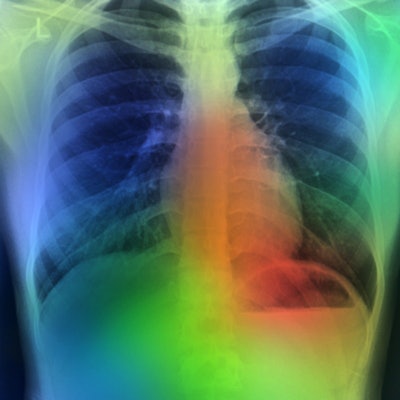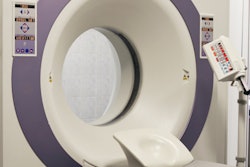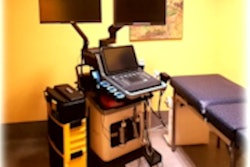
VIENNA - An artificial intelligence (AI)-based software application can identify missed clinically significant findings in chest radiographs, according to research presented on 3 March at ECR 2023.
After applying commercial AI software to almost 4,000 chest x-ray studies, researchers from Mahajan Imaging in India and AI firm Carpl.ai found that the application detected clinically significant radiological findings in nearly 1% of the exams.
"While this is a relatively low percentage, it still represents a significant number of potential errors that could be caught with the use of an AI-based tool," said presenter Dr. Vasantha Venugopal.
Chest x-rays are one of the most performed imaging procedures in the world, and it's important to have an effective quality control mechanism, Venugopal said, who also serves as chief medical officer for Carpl.ai. AI could help, but it could also produce many false-positive findings and hinder efficiency.
In their study, the researchers wanted to assess the performance of ChestEye Quality (Oxipit) in providing quality assurance for chest x-ray interpretations. They applied the software to a retrospective sample of 3,892 chest radiographs gathered from a single institution over a six-month period.
The software first uses a deep-learning algorithm to analyze chest x-rays for findings. Next, a natural language processing algorithm then evaluates the associated radiology report to see if any clinically significant findings were missed. In cases flagged by the software, a radiologist reviews the exam to confirm if there's a mismatch and then determines if any mismatches were clinically significant.
Of the cases analyzed by the software, over 600 (17%) were flagged by the software. Thirty-four (0.87% overall) were deemed to have clinically significant findings that were not appropriately described in the final radiologist report. These findings included 20 studies with nodular opacities, 11 containing consolidation, and one study each of pneumothorax, malposition of central venous line, and pleural effusion.
"If you look at the scale of the operation of our institution, in which we do over 300,000 exams a year, that means 3,000 patients who would have a change in their disease outcomes," he said. "Even such small numbers could change the lives of so many families."


















